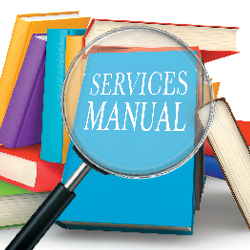|
REGISTRATION REQUIRED
exhibiting 101
 Audi-do and Audi-don't
Are you considering integrating audiovisual in your exhibit? Here are some pitfalls to avoid and best practices. By Betsy Earle
audiovisual, which typically refers to an electronic media that has audio and visual components, such as a multimedia presentation, has come a long way over the last 20 years. The opportunities to incorporate more cool displays in trade show booths have grown substantially, and in some ways, what used to be cost prohibitive has now become doable, even for smaller exhibitors working with tight budgets. But what if you're new to the AV arena and aren't sure how to get started? Here are some best practices you should consider when you're integrating AV into your program, as well as a few bad habits you should avoid.
1. Be sure that your AV has a purpose. Make sure that whatever you are presenting elevates the message you are trying to convey to your attendee. Maybe you're calling out a product's new features and benefits or highlighting something that's entirely new. For example, did you recently install a product at a customer location and you want to show off the flashy bells and whistles, but you can't pull it off with a static product on the show floor? AV gives lets you show action where something that's otherwise static might not come to life. But if you don't have something to present, don't bring AV to the show just to say you brought AV to the show. Does what you're showing need an AV element or can it be well illustrated with use of a static image? 2. Do consider the optimal size for content. It's not necessarily true that bigger display content is better, but it definitely should not be blocked by people. If your 10-by-10 exhibit is staffed by two people, position your AV so that it won't be obstructed. Keep in mind that the optimal height for content is 5 feet 7 inches from the ground, the average height of a person in the United States. Also ensure your font is large enough to be read by visitors standing far away. 3. Do consider the location including the venue, city, and building rules along with the labor requirements. AV is typically not an exclusive service, so you can likely bring in your own supplier, but it comes with caveats. In addition to your typical trade show installation and dismantle carpentry labor, there are a number of AV requirements. Depending on the venue, you will need to either work with the exclusive provider or pay a supervision fee to the building to bring in your own labor. The first item on your agenda will be to determine which jurisdiction the AV union workers are associated with. You'll be able to find this out by speaking with your exhibit house partner or calling the show's preferred AV supplier. Then find out what the requirements are for you to bring in your own team versus working with the preferred supplier. Sometimes, this will come in the form of a minimum crew to work with your team. In other places, you'll be free to bring in your own partner without supervision. If you're able to bring in your own partner, find out if they need to be registered as an Exhibitor Appointed Contractor (EAC). 4. Do recognize that content is king (or queen!). Don't just display your company presentation on repeat. When monitors were first installed in exhibits, running a company presentation or documentary on repeat was a trend, and to this day I see companies doing this. They take resources that they already have and scroll it on a monitor just for the sake of having content in their booth. A lot of these presentations are boring, lengthy, or difficult to connect with. While you might care about your CEO's identity and company history, attendees are more interested in your services and their impact on their business. Once you've engaged with an attendee and they've expressed interest, you'll have ample opportunity to tell them about your business, how it started, and all the other details, but this is not how you'll initially draw their attention. Attendees are looking for authentic connections and stories. When you're thinking about integrating AV components into your exhibit, focus on the story that you are telling your attendees. How did your product evolve into where it is today? How can your product solve your customers' most pressing needs? What's cool about your product that your competition isn't offering? 5. Don't just hire someone without quoting out your project. AV can get expensive fast. Just like anything else that's part of your trade show program, it's important to quote out your job to multiple suppliers. There are some amazing AV companies out there, but do your due diligence and make sure you're comparing quotes. Ask about overtime, strike time, supervision rates, and rates for accessories like chargers and extension cords. It will likely be a challenge to do an apples-to-apples comparison, so check out the sidebar for some questions that will get you started.  Attendees are looking for authentic stories and connections. When you're thinking about integrating AV components into your exhibit, focus on the story that you are telling your attendees. Attendees are looking for authentic stories and connections. When you're thinking about integrating AV components into your exhibit, focus on the story that you are telling your attendees.
7. Don't forget about distractions in your booth, sound, and how your attendees are going to engage with your content. There is typically a decibel limit for audio on the show floor to protect exhibitors' ability to hear people in their booth. This usually can be found in the show kit, but if it's not in there, ask show management. This same rule also applies to your neighbors. When you are on-site, if the volume in your neighbor's booth seems loud, ask show management to test their sound level decibels. Also, it's important to consider the hearing impaired by making sure your content has captions. By including captions on your content, you will make sure that everyone can engage with your exhibit. When you lay out your space, separate your AV from your meeting area so conversations can take place without distraction. For example, you wouldn't want to put a monitor on the outside of a meeting room wall if it includes looping music. 8. Don't forget to factor material handling into your AV budget. When you order AV components through the show's exclusive provider, your material handling is included in the cost of your rental program. By bringing in your own items through a third party or through your exhibit house, you will be billed by CWT (hundredweight) on whatever you bring into the building. You might get a better price from an outside supplier for what you're renting, but you'll need to factor in that additional cost by gauging the weight of what you plan to bring. A key action item here is to ask your supplier the approximate weight of what you are renting so you can set expectations in your budget. Take the total weight that they give you and multiply it by the CWT rate for direct-to-show material handling (or, if the AV company takes that route, advance warehouse). That's going to give you an expected total cost of material handling of your AV equipment. Add that to the rental-plus-labor total to determine an estimated all-in AV cost. 9. Don't cut out the dress rehearsal. Just like any other piece of your trade show program, make sure that your AV ducks are in a row prior to getting to the venue. Create a pre-show list of your tech needs and include the specifications of the equipment along with the electrical requirements for that equipment. For example, at the recent IDDBA Show in Anaheim, my client had six monitors in the booth. Prior to the show, we met with the AV team to make sure that they had the content they needed in advance, that the specs of the content worked in the monitor sizes that we were renting, and that our electrical diagram indicated the location for the power for each of the monitors. If you skip this step, you risk getting to the show floor and not having an outlet where you need it, which can slow down your entire implementation process. 10. Do consider alternatives to the traditional. Now I realize that not everyone has the budget of Samsung or Panasonic at the Consumer Electronics Show, but we always want to be thinking outside of the box to see what other options exist out there. For example, can you mix up LED tile across a wall that has other mediums or bring in a curved monitor? There are so many creative ideas. I'll close this by saying what I always say: Don't add something to your booth unless it creates additional value. Don't bring a monitor just have a monitor. But if you're intentional about the items that you're integrating into your trade show program and approaching the idea with time, preparation, and creativity, you can make a great impact on show attendees.E
Questions for Your AV Team
It isn't easy to compare AV providers, but the answers to the below questions will tell you a lot. ➤ Do you offer 24/7 technical support? (If the answer is no, run away now.) ➤ Will I have contact information for the on-site tech prior to the show? ➤ Will you provide a production plan including room names, dates, times, and set/strike times? ➤ How will you handle security settings so that my private content stays private? ➤ Do you bring backup equipment or have local warehouses in case something doesn't work? ➤ Where is your warehouse, and how far will you have to ship the AV equipment? ➤ Do you have experience in the convention center or venue that my event or trade show is located in? ➤ Will I need any converters for my laptop/equipment? What are the power requirements? ➤ How much experience do your technicians have? Can you provide references? ➤ Do you offer remote sales support to help potential clients who are not in the same city as you? ➤ Will you help create content or do we need to provide the content to you? ➤ Do you offer any options that might improve our program that might not be in my scope?  Betsy Earle, CTSM
Betsy Earle, CTSMmanaging director and founder of Event Driven Solutions LLC. Earle obtained her MBA at the University of Miami and earned her Diamond-level CTSM designation in 2018. Exhibiting101@exhibitorgroup.com
|
|
|
||||||||||||||||||||||||||||
|
|
||||||||||||||||||||||||||||
|
TOPICS Measurement & Budgeting Planning & Execution Marketing & Promotion Events & Venues Personal & Career Exhibits & Experiences International Exhibiting Resources for Rookies Research & Resources |
MAGAZINE Subscribe Today! Renew Subscription Update Address Digital Downloads Newsletters Advertise |
FIND IT Exhibit Producers Products & Services All Companies Get Listed |
EXHIBITORLIVE Sessions Exhibit Hall Exhibit at the Show Registration |
ETRAK Sessions Certification F.A.Q. Registration |
EDUCATION WEEK Overview Sessions Hotel Registration |
CERTIFICATION The Program Steps to Certification Faculty and Staff Enroll in CTSM Submit Quiz Answers My CTSM |
AWARDS Exhibit Design Awards Portable/Modular Awards Corporate Event Awards Centers of Excellence |
NEWS Associations/Press Awards Company News International New Products People Shows & Events Venues & Destinations EXHIBITOR News |
||||||||||||||||||||
|
||||||||||||||||||||||||||||






